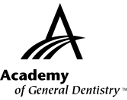|
Exercise No. 370
Subject Code: 250
Operative (Restorative) Dentistry
The 15 questions for this exercise are based on the article, Influence of irrigation protocols on the bond strength of fiber posts cemented with a self-adhesive luting agent 24 hours after endodontic treatment, on pages 22-26. This exercise was developed by Robert A. Busto, DMD, MBA, FAGD, in association with the General Dentistry Self-Instruction committee.
|
Reading the article and successfully completing this exercise will enable you to:
- understand the effects of various endodontic irrigants on bonding of fiber posts to dentin;
- understand the effect of post space preparation in relation to various endodontic irrigants; and
- coordinate endodontic and restorative treatment of coronally challenged teeth.
|

